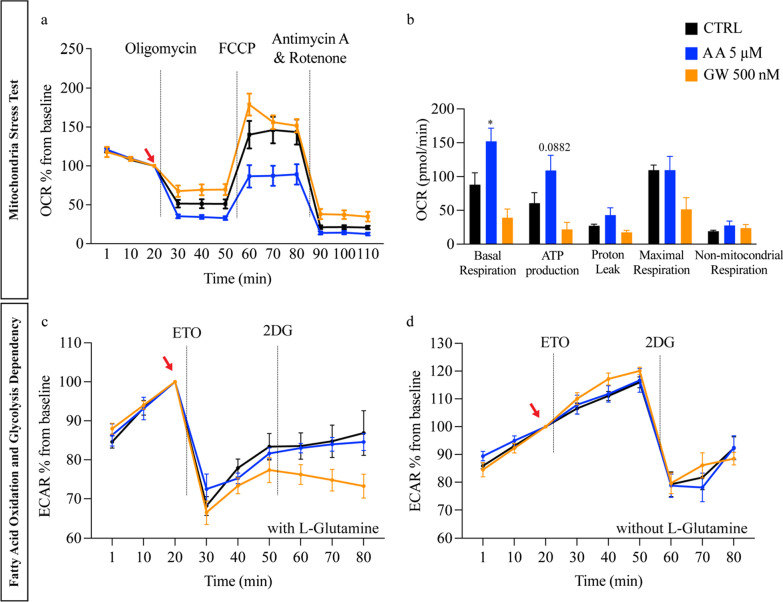Fig. 4.
Effect of AA and GW on mitochondrial respiratory capacity and substrate flexibility of iPSC-CMs. Experiments were performed using D27 iPSC-CMs line UKKi036-C. a Relative oxygen consumption rate (OCR) in cells at day 27 of differentiation after sequential administration of oligomycin (ATP synthase inhibitor), FCCP (uncoupler of oxidative phosphorylation in mitochondria), and antimycin A and Rotenone (electron transport chain blockers) normalized to last value of basal respiration (baseline, red arrow). b OCR (pmol/min) for basal respiration (CTRL: 87.91 versus AA 152.07 and GW 39.25 p = 0.0217), ATP production (CTRL: 60.63 versus AA 109.03 and GW 14.7 p = 0.0882), proton leak, maximal respiration, and non-mitochondrial respiration. Ordinary one-way ANOVA was used to evaluate statical significance. c Relative extracellular acidification rate (ECAR) normalized to baseline (red arrow) of iPSC-CMs cultured in the Seahorse medium with L-glutamine. Addition of ETO and 2DG block the FAO and glucose-dependent glycolysis, respectively. d Relative ECAR normalized to baseline (red arrow) of iPSC-CMs cultured in the Seahorse medium without L-glutamine

